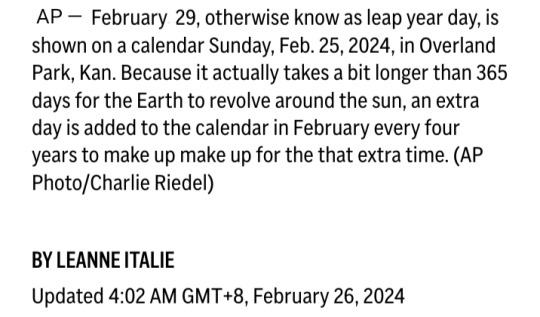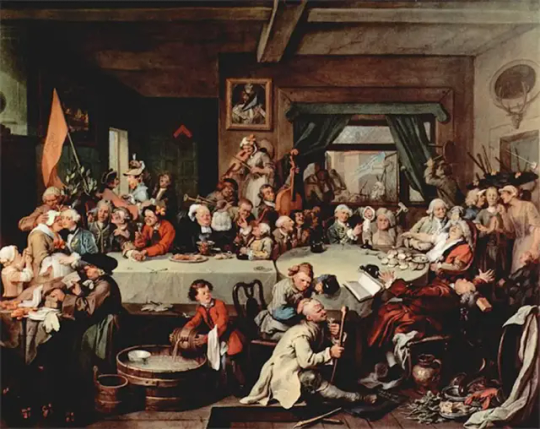#julian calendar
Explore tagged Tumblr posts
Text
Alien: So your calendar was created by this guy Caesar in...
Human: Rome.
Alien: And later updated to its current form by this guy Gregory in...
Human: Also Rome.
Alien: And your international date line passes opposite...
Human: Greenwich, England.
Alien: Why?
Human: Well, they used to have a really good clock...
831 notes
·
View notes
Text














Milestone Monday
A Date with History
On this day, February 24, 1582, Pope Gregory XIII announced the Gregorian calendar with the papal bull (public decree) Inter gravissimas. The primary reason for this reform was to address the calendar's drift concerning the equinoxes and solstices.
Before the Gregorian calendar, the Julian calendar, introduced by Julius Caesar in 46 BC, counted a year as 365.25 days, with an extra day added every four years for leap years. However, this calculation was slightly off, leading to a cumulative drift of approximately 11 minutes per year. By the 16th century, the calendar had drifted significantly; the spring equinox had moved from March 21 to around March 11. Pope Gregory XIII decided to implement a reform to realign the calendar with the seasons.
The Gregorian calendar was first implemented in October 1582 in Catholic countries such as Italy, Spain, Portugal, Austria, and Poland. The day after October 4, 1582, became October 15, 1582, skipping 10 days to correct the drift. At first, Protestant and Orthodox nations refused to adopt it, unwilling to follow the Pope's direction. This most certainly caused problems and headaches, to be sure! Consequently, crossing a border meant traveling backward and forward on a calendar. Talk about time travel. That’s enough to make Marty McFly’s head spin!
Others were also slow to join the party. Great Britain and its colonies transitioned in 1752, skipping 11 days (September 2 was succeeded by September 14). Russia did not adopt the calendar until 1918, following the Bolshevik Revolution, which led to the calendar change that year, where January 31 was succeeded by February 14. However, over the following centuries, the Gregorian calendar became the worldwide standard, and today, it is widely used for civil purposes.
The featured images come from:
Wisconsin Artists Calendar published in Milwaukee, WI by Wisconsin Printmakers, 1936.
A Calendar: Twelve Poems by Robert Creeley. It was published in West Branch, Iowa byCoffee House Press, 1984.
Wisconsin Poets' Calendar published in Fairwater, WI by Midwestern Writers' Publishing House, 1983.
The Cynic's Calendar of Revised Wisdom for 1904 by Oliver Herford, Ethel Watts Mumford, and Addison Mizner. It was published in San Francisco by Paul Elder and Company, 1903.
-View more Milestone Monday posts
--Melissa, Special Collections Library Assistant
#Milestone Monday#milestones#gregorian calendar#julian calendar#Pope Gregory XIII#papal bull#calendar#A Calendar Twelve Poems#Robert Creeley#Coffee House Press#Wisconsin artists calendar#Wisconsin Printmakers#Wisconsin poets' calendar#Midwestern Writers' Publishing House#The Cynic's Calendar of Revised Wisdom for 1904#Oliver Herford#Ethel Watts Mumford#Addison Mizner#Paul Elder and Company#history dates#date with history
50 notes
·
View notes
Text

Рождество🎄🎅🔔❄
#christmas#christmas theme#christmas in russia#january 7#seasons#winter#aesthetic#moodboard#snow#winter holidays#christmas tree#christmas gift#nature#decor#miracle time#cozy#cozy winter#julian calendar
27 notes
·
View notes
Text

32 notes
·
View notes
Text

Srećno Badnje veče i Božić © Dragana Dimitrijević
12 notes
·
View notes
Text



NEW YORK (AP) — Leap year. It’s a delight for the calendar and math nerds among us.
So how did it all begin and why?
Have a look at some of the numbers, history and lore behind the (not quite) every four year phenom that adds a 29th day to February.
BY THE NUMBERS
The math is mind-boggling in a layperson sort of way and down to fractions of days and minutes.
There’s even a leap second occasionally, but there’s no hullabaloo when that happens.
The thing to know is that leap year exists, in large part, to keep the months in sync with annual events, including equinoxes and solstices, according to the Jet Propulsion Laboratory at the California Institute of Technology.
It’s a correction to counter the fact that Earth’s orbit isn’t precisely 365 days a year.
The trip takes about six hours longer than that, NASA says.
Contrary to what some might believe, however, not every four years is a leaper.
Adding a leap day every four years would make the calendar longer by more than 44 minutes, according to the National Air & Space Museum.
Later, on a calendar yet to come (we’ll get to it), it was decreed that years divisible by 100 not follow the four-year leap day rule unless they are also divisible by 400, the JPL notes.
In the past 500 years, there was no leap day in 1700, 1800 and 1900, but 2000 had one.
In the next 500 years, if the practice is followed, there will be no leap day in 2100, 2200, 2300 and 2500.
The next leap years are 2028, 2032, and 2036.
WHAT WOULD HAPPEN WITHOUT A LEAP DAY?
Eventually, nothing good in terms of when major events fall, when farmers plant and how seasons align with the sun and the moon.
“Without the leap years, after a few hundred years we will have summer in November,” said Younas Khan, a physics instructor at the University of Alabama at Birmingham.
“Christmas will be in summer. There will be no snow. There will be no feeling of Christmas.”


WHO CAME UP WITH LEAP YEAR?
The short answer: It evolved.
Ancient civilizations used the cosmos to plan their lives, and there are calendars dating back to the Bronze Age.
They were based on either the phases of the moon or the sun, as various calendars are today. Usually they were “lunisolar,” using both.
Now hop on over to the Roman Empire and Julius Caesar.
He was dealing with major seasonal drift on calendars used in his neck of the woods. They dealt badly with drift by adding months.
He was also navigating a vast array of calendars starting in a vast array of ways in the vast Roman Empire.
He introduced his Julian calendar in 46 BCE.
It was purely solar and counted a year at 365.25 days, so once every four years an extra day was added.
Before that, the Romans counted a year at 355 days, at least for a time.
But still, under Julius, there was drift. There were too many leap years.
"The solar year isn’t precisely 365.25 days. It’s 365.242 days," said Nick Eakes, an astronomy educator at the Morehead Planetarium and Science Center at the University of North Carolina in Chapel Hill.
Thomas Palaima, a classics professor at the University of Texas at Austin, said adding periods of time to a year to reflect variations in the lunar and solar cycles was done by the ancients.
The Athenian calendar, he said, was used in the fourth, fifth and sixth centuries with 12 lunar months.
That didn’t work for seasonal religious rites. The drift problem led to “intercalating” an extra month periodically to realign with lunar and solar cycles, Palaima said.
The Julian calendar was 0.0078 days (11 minutes and 14 seconds) longer than the tropical year, so errors in timekeeping still gradually accumulated, according to NASA. But stability increased, Palaima said.
The Julian calendar was the model used by the Western world for hundreds of years.
Enter Pope Gregory XIII, who calibrated further. His Gregorian calendar took effect in the late 16th century.
It remains in use today and, clearly, isn’t perfect or there would be no need for leap year. But it was a big improvement, reducing drift to mere seconds.
Why did he step in? Well, Easter.
It was coming later in the year over time, and he fretted that events related to Easter like the Pentecost might bump up against pagan festivals.
The pope wanted Easter to remain in the spring.
He eliminated some extra days accumulated on the Julian calendar and tweaked the rules on leap day.
It’s Pope Gregory and his advisers who came up with the really gnarly math on when there should or shouldn’t be a leap year.
“If the solar year was a perfect 365.25 then we wouldn’t have to worry about the tricky math involved,” Eakes said.
WHAT’S THE DEAL WITH LEAP YEAR AND MARRIAGE?
Bizarrely, leap day comes with lore about women popping the marriage question to men.
It was mostly benign fun, but it came with a bite that reinforced gender roles.
There’s distant European folklore.
"One story places the idea of women proposing in fifth-century Ireland, with St. Bridget appealing to St. Patrick to offer women the chance to ask men to marry them," according to historian Katherine Parkin in a 2012 paper in the Journal of Family History.
Nobody really knows where it all began.
In 1904, syndicated columnist Elizabeth Meriwether Gilmer, aka Dorothy Dix, summed up the tradition this way:
“Of course people will say ... that a woman’s leap year prerogative, like most of her liberties, is merely a glittering mockery.”
The pre-Sadie Hawkins tradition, however serious or tongue-in-cheek, could have empowered women but merely perpetuated stereotypes.
The proposals were to happen via postcard, but many such cards turned the tables and poked fun at women instead.
Advertising perpetuated the leap year marriage game. A 1916 ad by the American Industrial Bank and Trust Co. read thusly:
“This being Leap Year day, we suggest to every girl that she propose to her father to open a savings account in her name in our own bank.”
There was no breath of independence for women due to leap day.
SHOULD WE PITY THE LEAPLINGS?
Being born in a leap year on a leap day certainly is a talking point. But it can be kind of a pain from a paperwork perspective.
Some governments and others requiring forms to be filled out and birthdays to be stated stepped in to declare what date was used by leaplings for such things as drivers licenses, whether February 28 or March 1.
Technology has made it far easier for leap babies to jot down their February 29 milestones, though there can be glitches in terms of health systems, insurance policies, and with other businesses and organization that don’t have that date built in.
There are about 5 million people worldwide who share the leap birthday out of about 8 billion people on the planet.
Shelley Dean, 23, in Seattle, Washington, chooses a rosy attitude about being a leapling.
Growing up, she had normal birthday parties each year, but an extra special one when leap years rolled around.
Since, as an adult, she marks that non-leap period between February 28 and March 1 with a low-key “whew.”
This year is different.
“It will be the first birthday that I’m going to celebrate with my family in eight years, which is super exciting, because the last leap day I was on the other side of the country in New York for college,” she said. “It’s a very big year.”

#Leap Year#calendar#equinoxes#solstices#Jet Propulsion Laboratory#California Institute of Technology#NASA#National Air & Space Museum#Julius Caesar#julian calendar#Pope Gregory XIII#gregorian calendar#Elizabeth Meriwether Gilmer#Dorothy Dix#leaplings
3 notes
·
View notes
Text



On April 19th, I made bread.
3 notes
·
View notes
Note
7 and 10 for the ask game
7) do you prefer Julian, Gregorian or astronomical dates?
Depends! Certain Julian dates align better with our seasonal cycles. Old Michaelmas, for example, is around the time the farmers harvests end here. Christmas, Good Friday, walpurisnatch Easter are on Gregorian time. My May celebrations coincide with the heliacal setting of the Pleiades.
Other holy days I use a combination. My St bride’s day celebrations start the first and end at the exact midway point.
there’s no ten friend 😂💕
#traditional witchcraft#holy days#julian calendar#Gregorian calendar#brightgnosis#dual faith#syncretism#folk catholic
5 notes
·
View notes
Text

Roman Calendar (Fasti Vallenses) - ISAW
"Even after the days of the month had lost any fixed correspondence with the phases of the moon, the Romans continued to count them in relation to one of three fixed points in the lunar cycle. The Kalends (from calare, "proclaim") was the first day of the month ... at the first appearance of the crescent new moon... The Nones (from nonus, "ninth") coincided with the first quarter of the moon and was the ninth day (counting inclusively) before the Ides (from iduare "to divide"), which occurred at the full moon and came in the middle of the month." - The Julian Calendar
#julian calendar#ancient history#ancient rome#calendar#kalends#lunar calendar#moon phases#solar calendar#sun path#seasons
4 notes
·
View notes
Text
#OTD in 1752 – The Gregorian calendar is adopted in Ireland and Britain, 170 years after mainland Europe | 2 September is followed by 14 September.
‘Give us our eleven days!’ The riots of 1752. The eleven days referred to here are the ‘lost’ 11 days of September 1752, skipped when Britain and Ireland changed over from the Julian calendar to the Gregorian calendar, synchronising us with the most of Europe. The Gregorian calendar is today’s international calendar, named after Pope Gregory XIII in February 1582. Before 1752, Britain, Ireland…

View On WordPress
5 notes
·
View notes
Text
Thinking about how we memorialise death dates, particularly historic figures (it was the anniversary of Anne Boleyn's execution the other day), and whether these dates are actually correct if you care about solar years.
Back then, they used the Julian calendar, and when the UK finally moved to the Gregorian calendar in 1752 we had to jump forward by 11 days due to the drift.
This means that, though the execution of Anne Boleyn took place on the 19th May as per the Julian calendar, by solar calendar years it was actually the 8th May.
Also, I only care about this because I believe George Boleyn needs a solar accurate F in the chat on the 6th.
Let me know if this is wrong!
3 notes
·
View notes
Text
I knew this post would come around on my dash today.
THAT WAS NOT CEASARS FAULT!!!
The roman calendar year originally had only ten months and 304 days and beginned with March. In 7th century BCE January and February were tacked onto the end of the year and the calendar year was lengthened to 355 days (this is supposed to happen during the reign of Numa Pompilius, one of Roman kings pre-establishment of the Roman republic). Every second year an extra month (Mercedonius, mensis intercalaris) would be added to adjust for the 10 extra days not included within the calendar.
This of course lead to a lot of confusion, plus the 1/4th of a day caused discrepancies over time. So the julian calendar reform in 46 BCE (the one GJC did) discarded the concept of mensis intercalaris, changed the number of days in a calendar year to 365, adjusted the number of days in individual months, changed the name of Quintilis to Julius (so July, after Caesar's nomen gentile) and added the concept of leap years as we know them today.
Now here's the catch.
Changing the beginning of the year from March to January was not included in this reform. That change happened 190 BCE. 90 YEARS BEFORE CAESAR WAS EVEN FUCKING BORN!!! This was because new consuls would begin their term on January 1st, and since a year was commonly referred to by the names of the ruling consuls (e.g. the year of Cicero & Hybrida) it made sense for the year to begin with this date.
I hate that SEPTember OCTOber NOVember and DECember aren’t the 7th, 8th, 9th, and 10th months.
#i feel like i should save this rant somewhere because i know i'll need it again#i hope my chronology professor is proud of me#ides of march#julian calendar#gaius julius caesar
569K notes
·
View notes
Text
I know in the grand scheme of historical misinformation this is almost inconsequential shit, but I have a huge pet peeve with "September/October/November/December aren't month 7 8 9 and 10 because of Julius Caesar"
No it's not. The Roman calendar did indeed start in March during most of the Roman Republic, but it had already been changed to January 1st at least 100 years before Julius Caesar.
Caesar reforming the very clumsy Roman calendar, the month of July (Quinctilis) being named after him, and later August (Sextilis) after Emperor Augustus are different things.
1 note
·
View note
Text
Microsoft should add an option to switch to the Julian calendar on Windows for those of us who reject the lies of Pope Gregory XIII
0 notes
Text
happy romans decided to add two months in their calendar reformed by pope gregory 🥂
#happy new year#gregorian calendar#julian calendar#roman empire#eurocentric world revolving around eurocentric achievements but this is fine so let's celebrate#history
1 note
·
View note
Text
happy julian birthday to sir Isaac newton
0 notes